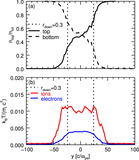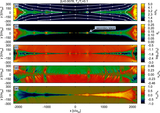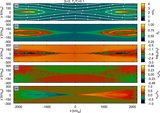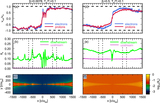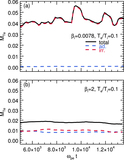Image Details
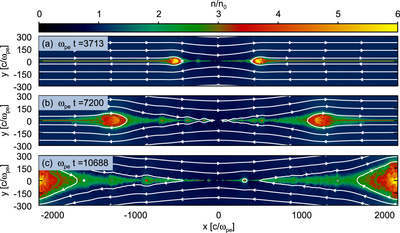
Caption: Figure 2.
Time evolution of a representative low-﹩{\beta }_{{\rm{i}}}﹩ simulation (A[0] in Table 1), with ﹩{\beta }_{{\rm{i}}}=0.0078﹩ and ﹩{T}_{{\rm{e}}}/{T}_{{\rm{i}}}=0.1﹩. The snapshots show number density of electrons in units of the initial density at (a) ﹩t=3713\,{\omega }_{\mathrm{pe}}^{-1}\approx 0.25\,{t}_{{\rm{A}}}﹩, (b) ﹩t=7200\,{\omega }_{\mathrm{pe}}^{-1}\approx 0.50\,{t}_{{\rm{A}}}﹩, and (c) ﹩t=10688\,{\omega }_{\mathrm{pe}}^{-1}\approx 0.75\,{t}_{{\rm{A}}}﹩. We show the whole dimension of the box in x and only a small portion close to the center in y. A characteristic feature of this and other low-﹩{\beta }_{{\rm{i}}}﹩ simulations is the presence of secondary magnetic islands, i.e., structures like those at ﹩x\approx 300\,c/{\omega }_{\mathrm{pe}}﹩ and ﹩x\approx -900\,c/{\omega }_{\mathrm{pe}}﹩ (panel (c)). These are to be distinguished from the large primary island at ﹩x\approx \pm 2200c/{\omega }_{\mathrm{pe}},﹩ whose properties depend on choices at initialization. As the primary island grows, it will eventually inhibit further accretion of magnetic flux and the reconnection process will terminate.
Copyright and Terms & Conditions
© 2017. The American Astronomical Society. All rights reserved.




